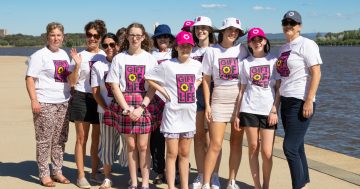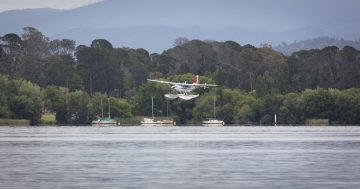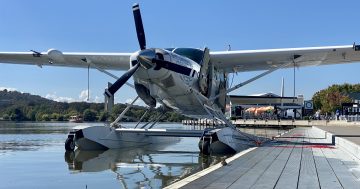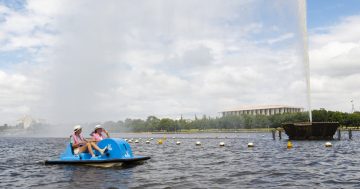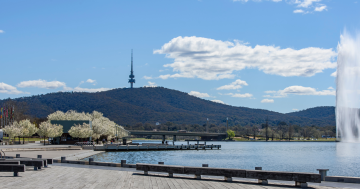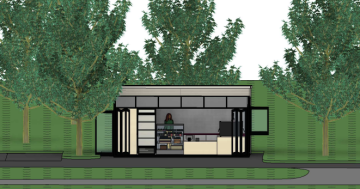
The Sydney Seaplane Cessna Caravan comes in to land on Lake Burley Griffin during last year’s test flight. Photos: Thomas Lucraft.
The National Capital Authority’s green light for seaplanes on Lake Burley Griffin, despite strong opposition, has been slammed as “shockingly premature and an abrogation of its responsibilities”.
The Lake Burley Griffin Guardians said the discussion paper had been a kite-flying exercise without any detailed analyses of the proposal’s impacts. The group had expected a detailed proposal and consultation before any approval.
LBGG convenor Irene Davies said the NCA only seemed to be listening to those with a very narrow commercial interest, such as a few interstate tourism operators and their affluent customers.
Ms Davies doubted whether the claimed boost to tourism would be that significant.
“The NCA seems to be acting more as a proponent for the introduction of seaplanes rather than the impartial regulatory body for Lake Burley Griffin,” she said.
When the NCA announced the first demonstration flight by Sydney Seaplanes a year ago, NCA Board Chair Terry Weber said, “The demonstration flight will not only break new ground but will open the National Capital to further business and tourism opportunities”.
The Guardians say this implied support for the proposal even at that early stage.
Ms Davies said the NCA had made its decision before many of the operational, safety, infrastructure, environmental and commercial issues had been appropriately addressed.
She labelled “pathetic” a plan to hire a consultant to compile guidelines to accommodate seaplanes and current lake users such as the yachting and paddling communities.
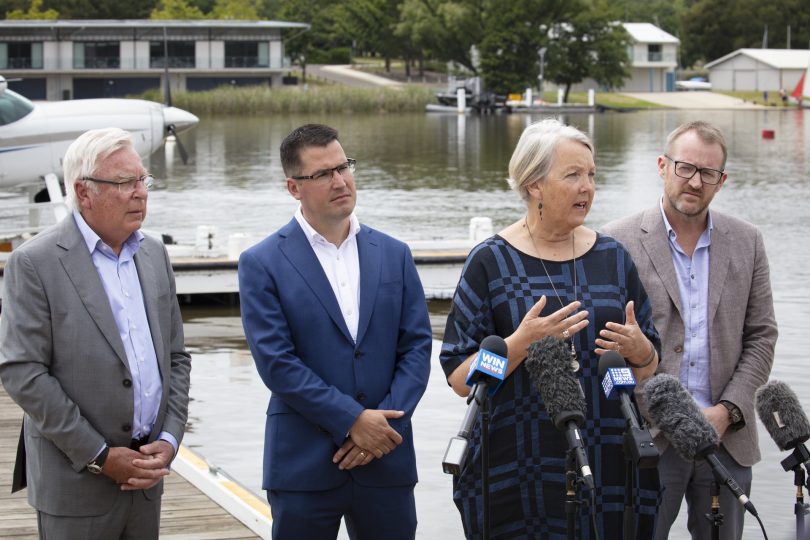
NCA chief executive Sally Barnes talks to reporters, with Sydney Seaplanes managing director Aaron Shaw on her right, NCA Chair Terry Weber, left, and Senator Zed Seselja at last year’s demonstration flight.
The consultation report showed only 20 per cent of respondents supported the proposal and 67 per cent were against it, with others neutral, mixed or needing more information, the group said.
In its submission, the Canberra Yacht Club, a key lake user, said that seaplanes could threaten its viability.
The Guardians want a detailed cost-benefit analysis that considers the costs of infrastructure, of yet more reductions in the land and water estate held in trust for public National Capital purposes, and the loss of amenity Canberrans would face.
Ms Davies said that with at least two seaplane services operating, there could be up to eight flights a day that would interfere with other lake users, including those on the foreshores, and their quiet enjoyment of the amenity.
She said increasing densification in Canberra and the pandemic had highlighted the value of the lake as a recreational area and retreat.
“As Canberra densifies, it’s very important the lake is retained as a quiet area for people’s recreation and escape from an increasingly densely occupied city,” Ms Davies said.
While Sydney Seaplanes’ plans to move to electric-powered planes, if viable, would alleviate the noise factor, that many flights would still have significant impacts, she said.
The Guardians have described the lake as being at a tipping point and this proposal represents a significant change in its role and function.
“There’s going to be increased pressure from the powerboat owners to also have access,” Ms Davies said.
She also believed the safety issues needed to be looked at more closely.
Ms Davies has reiterated calls for a review of the NCA, its roles and functions, particularly in the wake of the War Memorial redevelopment consultations and now this decision.
“It is an indication that community voices are not being given weighting on the board of the NCA and that’s a problem,” Ms Davies said.
“We don’t believe it’s taking community concerns into account in its decision making.”











